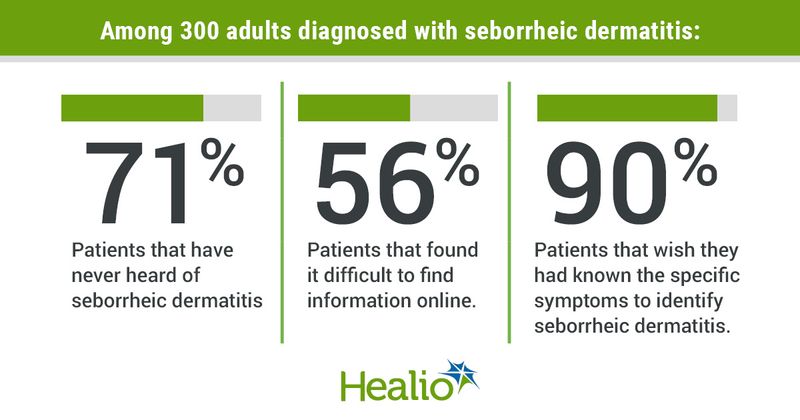Nationwide seborrheic dermatitis survey reveals ‘large educational gap to overcome’
Click Here to Manage Email Alerts
Arcutis Biotherapeutics announced the results of a nationwide survey that revealed a lack of diagnosis efficiency in adults with seborrheic dermatitis.
The results, presented at the Fall Clinical Dermatology Conference, also highlighted a long path to diagnosis for adults with seborrheic dermatitis and a lack of education in the health care providers who treat them.

“Considered to be a type of eczema, seborrheic dermatitis has a waxing and waning longitudinal course and may last for many years,” Raj Chovatiya, MD, PhD, assistant professor of dermatology at Northwestern University Feinberg School of Medicine and the lead investigator, told Healio. “There currently is no targeted therapy or cure for this condition.”

The online survey was conducted by The Harris Poll on behalf of Arcutis and included 300 adults with seborrheic dermatitis and 601 licensed U.S. health care providers specializing in dermatology. Of the 300 patients, 84% reported their current condition to be moderate or severe.
The survey found that while health care professionals estimated an average 1.5 years from symptom onset to diagnosis, individuals with seborrheic dermatitis reported an average of 3.6 years from symptom onset to seeking care. In fact, 63% of patients did not think their symptoms were severe enough to seek medical treatment.
“From the health care provider perspective, we clearly underestimate the chronicity of disease that drives patients to seek care,” Chovatiya, who is also director of the Center for Eczema and Itch and medical director of the department of dermatology clinical trials unit, both at Northwestern University Feinberg School of Medicine, said. “From the patient perspective, we have a large educational gap to overcome.”
Of the 300 patients, 71% said they had never heard of seborrheic dermatitis and 56% reported it was difficult to find information about the disease online.
Also, 76% of patients mistook their symptoms for different skin conditions.
“Seborrheic dermatitis can often be confused with other chronic inflammatory conditions, like atopic dermatitis or psoriasis,” Chovatiya said.
The survey found that 83% of patients did not realize all of their symptoms were due to seborrheic dermatitis, and 90% wished they had known the specific symptoms sooner. Many suffered emotional distress and avoided discussing their symptoms with family and friends (59%) or health care professionals (58%).
“Seborrheic dermatitis is a long-standing and persistent burden for many patients,” Chovatiya said. “Though understudied in comparison to other inflammatory skin conditions, we have a unique opportunity to improve our understanding of seborrheic dermatitis from top to bottom. Better diagnosis will come from a more complete understanding of pathogenesis, clinical presentations across diverse skin types, standardized tools for both diagnosis and rating of severity, and finally, targeted, efficacious therapeutics.”
